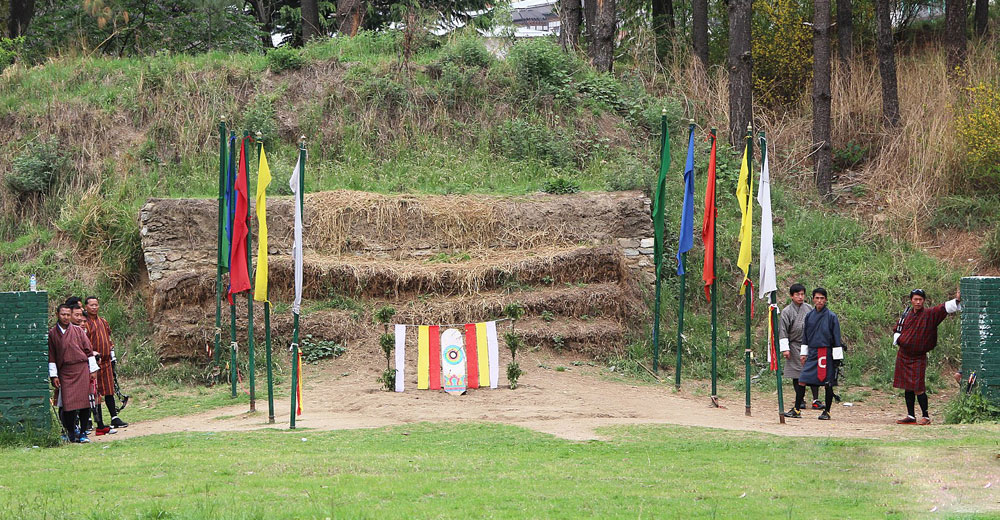Thinley Namgay
Compound archery is gaining popularity.
Sure, it might cost a pretty penny to get started with all those bells and whistles, but who can resist the allure of looking like a modern-day Robin Hood?
At a time where status symbols range from the latest smartphones to designer coffee cups, compound archery has staked its claim as the ultimate flex for the 21st-century socialite.
It’s not just about hitting the bulls’s eye anymore; it’s about making a statement “Look at me, I’ve got the gear, the skills, and the swagger to match!”
While traditional archery might hold a nostalgic charm, compound archery is the flashy new kid on the block, turning heads and raising eyebrows wherever it goes. After all, why settle for ordinary when you can aim for the extraordinary?
The price tag of becoming a modern-day archer in Bhutan is like stepping into a realm where your wallet might need a little extra support.
Picture this: you stroll into a shop, eyeing that sleek compound bow imported all the way from the USA or China. But then reality hits harder than a stray arrow—it’s going to set you back anywhere from Nu 125,000 to Nu 145,000!
And let’s not forget about the arrows. They aren’t your run-of-the-mill sticks you find lying around in the woods. They come with a price tag of Nu 1,000 each, more than a fancy dinner for two.
If you’re ready to dive into the world of compound archery, just make sure your wallet is strapped in for the ride.
The game itself
Compound archery entails elevated financial considerations. Archers are obliged to remit a fee for using the archery range, in addition to expenditures associated with refreshments, sustenance, and supplementary leisure activities.
Within the urban landscape, where every pursuit carries a fiscal implication, this national pass time necessitates a conscientious accounting of expenses. Beyond the initial investment in equipment, participants must allocate resources for the use of facilities and the procurement of sustenance during their endeavours.
And, what happens after a game is a different matter altogether. Whether indulging in cinematic experiences, culinary excursions, or leisurely pursuits, each activity demands a corresponding allocation of funds.
Archery is a cultural baby and deep-rooted. As the national sport and an enduring component of the Bhutanese way of life for centuries, archery holds a revered position within the collective consciousness of the populace.
Archery transcends mere athletic pursuit; it embodies a cherished cultural heritage. Its practice extends beyond the confines of sport to encompass social gatherings, festive occasions, and communal celebrations, thereby fostering a sense of unity and camaraderie among participants.
Hope
Some compound archers say that they may have the opportunity to represent the country in international competitions, a chance not readily available through traditional archery.
“Archery presents an avenue for Bhutanese to shine on the global stage and secure medals,” expressed archer Dema Wangchuk. She highlighted the increasing participation of women in compound archery as particularly encouraging.
Local tournaments are a common occurrence, with Bhutanese residing abroad significantly contributing to the sport’s promotion. Through live broadcasts on social media during their tournaments, they pique the interest of fellow Bhutanese.
Compound archery enjoys popularity also in neighboring regions like Kalimpong, Sikkim, and Darjeeling, further igniting enthusiasm among Bhutanese enthusiasts.
However, despite its popularity, compound archery also has social implications.
True cost?
When a young man or a family person engages in full-day archery and revelry after the game, frustrated mothers have a thing or two to lay it on the table. When that happens and keeps repeating, children are pushed to the fringes.
No study or research has been done and, so, the love for archery will always remain debatable. Financial loss is easy to calculate; but what time and productivity loss? How do we relate them in the picture of social health?
Archery is Bhutan’s national sport. But a very expensive affair, perhaps?


